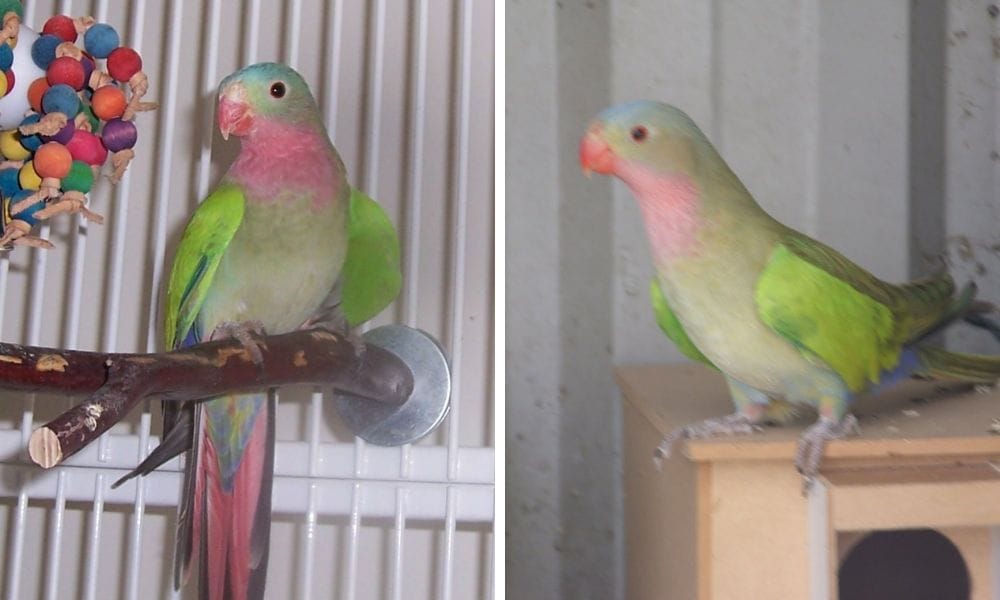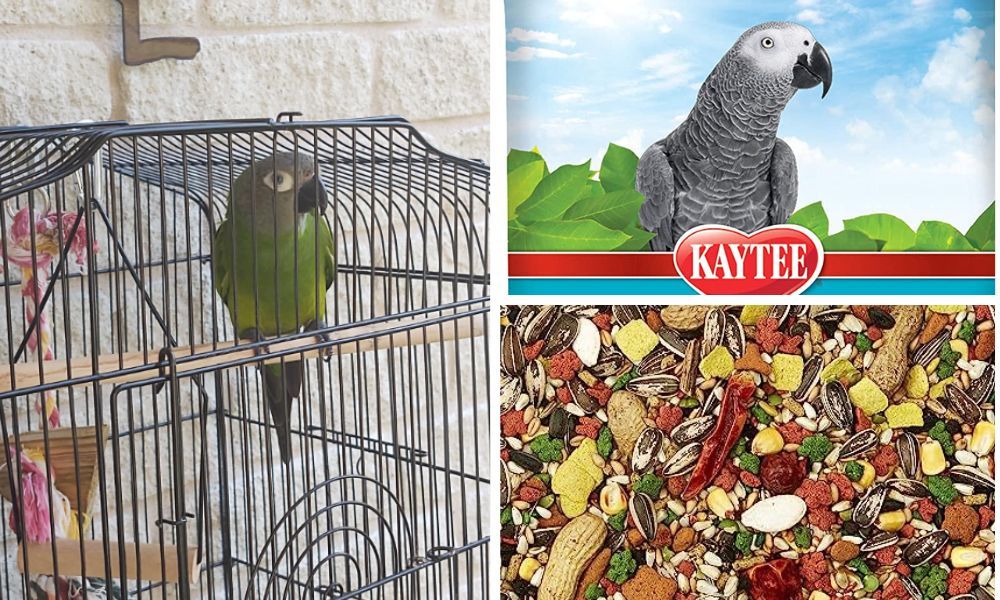The Enchanting Princess of Wales Parakeet: A Bird Lover's Delight
If you're looking for the perfect pet bird, look no further than the enchanting Princess of Wales Parakeet. It's a beautiful, intelligent and affectionate breed that will win your heart over in no time!

Introduction to the Wales Parakeet
The Princess of Wales Parakeet, also known as the Princess Parrot, is a medium-sized parrot native to Australia’s woodland and scrub habitats. This beautiful bird is named after Princess Alexandra of Denmark, who later married the Prince of Wales, Edward VII, and became the Queen of England. The Princess of Wales Parakeet is a popular species among bird enthusiasts and aviculturists due to its stunning pastel-colored plumage and gentle nature. With its vibrant colors and charming personality, the princess parrot has become a beloved member of the avian community, captivating the hearts of those who encounter it.
Key Takeaways:
- Discover the vibrant beauty and unique characteristics of the princess of wales parakeet.
- Learn about the habitat, diet, and breeding habits of this Australian bird.
- Understand the care requirements for those considering a princess parakeet as a pet.
The princess of wales parakeet, also known as the queen alexandra parrot, is a sight to behold with its pink throat and colourful princess parrot plumage. This medium-sized parrot, with its bright blue wings and rose throated allure, has captivated bird enthusiasts worldwide. Named after Princess Alexandra, the wife of Wales Edward VII, this bird is not only regal in name but also in appearance.
Pet owners often marvel at the bright green shoulders and upper tail coverts that adorn these birds. The mature male birds, in particular, showcase a bluish crown and a coral red beak, which are indicative of their full adult plumage. The princess parrots' longer tail feathers add to their elegance, making them a popular choice among aviary birds.

A Glimpse into the Princess Parrot's Habitat
The princess of wales parakeet inhabits arid woodland areas, often found in the interior of Australia. They are known to thrive in regions where spinifex grass and eucalyptus trees are abundant. These birds have adapted to survive in harsh environments, and their ability to find food and water sources is remarkable.
In the wild, these parrots are often seen in small groups, flying above the woodland canopy with loud calls that echo through the air. Their presence is a testament to the diversity and resilience of Australian bird species.
Physical Characteristics of the Princess Parrot
The Princess Parrot is a medium to large parrot, measuring approximately 16 inches in length, with a long tail that makes up half of its body length. Adult males have a distinctive elongated spatule-tip to the third primary flight feathers, which has an upward curl. The male’s iris is orange, while the female’s is more brown in color. The species has several color mutations, including blue, lutino, and albino. The Princess Parrot’s plumage is predominantly pastel-olive green, with green patches on the shoulder, a lilac forehead and rump, and a pink throat. These unique physical characteristics make the princess parrot a standout among Australian parakeets, admired for its elegance and beauty.
Diet and Nutrition: What Do Princess Parrots Eat?
The diet of the princess of wales parakeet consists mainly of seeds. They have a particular fondness for reasonable sized seeds that they can easily crack open with their beaks. In captivity, it's essential to provide a variety of seeds in seed bowls to ensure a balanced diet.

Apart from seeds, these parrots also enjoy fruits, vegetables, and the occasional treat of nuts. A well-rounded diet is crucial for maintaining the health and vibrancy of their feathers, as well as their overall well-being.

Breeding Season Insights
During the breeding season, the princess parrot’s behavior changes as they prepare to mate. In aviary settings, it is often recommended to have at least four pairs rather than just two males to reduce territorial conflicts over nesting sites and create a more harmonious breeding environment. The bright blue head of the male becomes even more pronounced, signaling their readiness to find a partner. These birds typically seek out hollows in trees or use inverted ceramic pot as nest boxes to lay their white eggs.
The breeding season is a busy time for these parrots, with both parents involved in raising the chicks. Once the chicks leave the nest, they quickly learn to fend for themselves, although they may stay with their parents in a family group for some time.
The Intriguing Color Variations of the Princess Parrot
The Princess of Wales Parakeet, often referred to as the rose-throated parakeet due to its delicate pink neck markings, is a medium-sized parrot that captivates bird enthusiasts with its color palette. Not all Princess Parrots display the same hues; some may exhibit a more pronounced rose coloration, while others might have subtler shades. This variation adds to the allure of these birds, making each one a unique spectacle. The blue-winged variety, in particular, showcases a stunning contrast between its azure feathers and the softer tones of its body, creating a visual treat for the observer.

In addition to the rose-throated and blue-winged variations, there are other color morphs within the species that are equally enchanting. The spinifex parrot, another name given to the Princess Parrot, hints at the bird's natural habitat among the spinifex grasses of Australia, where their colors blend seamlessly with the environment. Breeders and enthusiasts often seek out these different color morphs, not only for their beauty but also for the challenge and reward of nurturing such a diverse species. Each bird's plumage is a testament to the rich genetic tapestry that defines the Princess Parrot.
The Essentials of Princess Parrot Care: Diet and Accessories
When it comes to the care of the Princess Parrot, also known as Alexandra's parakeet, diet plays a pivotal role. A balanced diet consists of a variety of seeds, fruits, and vegetables to ensure they receive all the necessary nutrients. It's important to provide a feed bowl that is easily accessible and kept clean to promote healthy eating habits. Owners should also be mindful of the size of the feed bowl to prevent overfeeding and ensure that fresh water is available at all times for their feathered companions.
In addition to a nutritious diet, the environment of the Princess Parrot should be enriched with appropriate accessories to stimulate their intelligent minds. Perches of varying diameters are essential for foot health, and toys can provide mental stimulation and prevent boredom. It's crucial to choose toys that are safe and free from toxic materials, as parrots are known to be curious and will often explore with their beaks. Regular interaction with their human caretakers also contributes to the overall well-being of these medium-sized parrots, fostering a bond and ensuring they remain sociable and content.

Understanding the Princess Parrot's Social Behavior
Princess of wales parakeets are known for their social nature. They enjoy the company of more than one member of their species and can often be seen interacting with other species of birds. In captivity, it’s important to provide them with enough space and opportunities to socialize. In aviary settings, having at least four pairs rather than just two males can help reduce territorial conflicts and promote a more harmonious social environment.
These parrots are also known for their mimicking ability, although not as pronounced as some other parrot species. They can learn to replicate sounds and, to a lesser extent, human speech, which can be a delightful feature for pet owners.
Caring for Your Princess Parrot
For those considering a princess of wales parakeet as a pet, understanding their care requirements is essential. These birds need a spacious aviary or a large cage to accommodate their active lifestyle. They also require plenty of toys and perches to keep them entertained and engaged.
Regular interaction with pet owners is crucial for the princess parrot's well-being. They thrive on attention and can become quite affectionate with their human companions. A consistent routine for feeding, cleaning, and socializing will help keep these birds happy and healthy.

The Princess Parrot's Unique Features
One of the most striking features of the princess of wales parakeet is the bright blue mutation that occurs in some birds. This genetic variation results in a bird with even more vivid blue coloring, making it a rare and sought-after specimen for bird collectors.
The orange iris of the princess parrot is another distinctive trait that adds to their exotic appearance. Combined with their elongated spatule tip on the third primary feather, these birds are a marvel of avian beauty.
Conservation Status and Threats
The Princess Parrot is listed as Near Threatened on the IUCN Red List, with a declining population in the wild due to habitat degradation, reduced food availability, and predation by introduced species such as cats and red foxes. The species is also threatened by the introduction of sheep, rabbits, and camels, which compete with the parrots for food and habitat. Conservation efforts are necessary to protect the Princess Parrot and its habitat, including the establishment of protected areas and the control of invasive species. Ensuring the survival of the princess parrot requires a concerted effort to address these threats and preserve the natural environments where these wales parrots thrive.
Fun Facts and Trivia
- The Princess Parrot is also known as the Queen Alexandra Parrot, Princess Alexandra, and Rose-throated Parakeet.
- Adult males have a distinctive bluish crown and upper tail coverts.
- The Princess Parrot is a free breeder and thrives in minimalist conditions, making it a popular species among keepers of Australian Parrots.
- The species is known for its friendly and attractive personality, making it a favorite among bird enthusiasts.
- The Princess Parrot is a nomadic desert dweller, found in the arid regions of central and western Australia.
- The species is able to withstand cold temperatures in captivity due to its arid origins.
- The Princess Parrot has been a popular bird in captivity since being imported to Europe around 1895.
- The species is able to breed when it is a year old and may lay eggs and rear young as early as eight months of age.
- The Princess Parrot is a large aviary bird, requiring a spacious enclosure with plenty of room to fly and exercise.
- The species is known for its long tail, which makes up half of its body length.
- The Princess Parrot is a social species and can be kept with other birds, including other species of parrots.
- The species is known for its white eggs, which are laid in a tree hollow or nest box.
- The Princess Parrot is a popular species among aviculturists, including Josef Dexler, who is known for breeding the blue mutation of the species.
These fun facts and trivia highlight the fascinating aspects of the princess parrot, making it clear why this bird is a delight for bird lovers and aviculturists alike.
Summary
The princess of wales parakeet is a bird of extraordinary beauty and charm. With their bright blue wings, colourful plumage, and engaging personalities, they make wonderful companions for bird lovers. Understanding their habitat, diet, breeding habits, and care requirements will ensure that these birds live a long and healthy life, whether in the wild or as cherished pets.
FAQ Section
Q: What is the life span of a princess of wales parakeet? A: The princess of wales parakeet can live for 20-30 years with proper care, making them a long-term commitment for pet owners.
Q: When do princess parrots reach sexual maturity? A: Princess parrots typically reach sexual maturity at around 2 years of age, although this can vary depending on individual birds and their environment.
Q: How can I tell if my princess parrot is a male or female? A: Male princess parrots often have brighter coloring and a greyish crown, while females may have a more subdued hue and lack the bluish crown. However, the most accurate way to determine the sex of your bird is through DNA testing.


